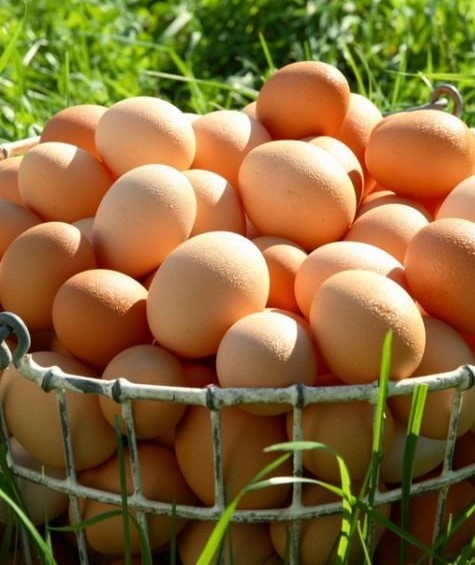Reviving Wayanad - A Call to Action for Western Ghats Conservation

The Looming Threat to Western Ghats
The Western Ghats, one of the world's eight biodiversity hotspots, faces unprecedented threats from environmental degradation, high population density, and household encroachment. This fragile ecosystem, which stretches across the western edge of India, is home to a vast array of flora and fauna, many of which are found nowhere else on the planet.
Environmental Degradation
Rampant deforestation, soil erosion, and pollution have taken a devastating toll on the Western Ghats. The once-pristine rivers and streams are now choked with plastic waste, and the air is thick with the smoke of human activity. The delicate balance of the ecosystem is under siege, and the consequences are far-reaching.
High Population Density and Household Encroachment
The Western Ghats are home to numerous settlements and villages, with many more springing up every year. The pressure on the land is immense, leading to widespread encroachment into protected areas. The result is habitat loss, fragmentation, and degradation, pushing countless species to the brink of extinction.
The Wake-Up Call: Recent Landslides in Wayanad
The recent landslides in Wayanad have highlighted the urgent need for conservation efforts. The devastating impact of these natural disasters is a stark reminder of the consequences of environmental neglect. It is a clarion call to action, urging us to take immediate steps to protect the Western Ghats and all they encompass.
Unveiling the Natural Wonders of Western Ghats
The Western Ghats, a majestic mountain range, stretches across Kerala, Karnataka, Tamil Nadu, and Maharashtra, boasting breathtaking landscapes, waterfalls, and wildlife reserves. This incredible ecosystem is home to a diverse array of flora and fauna, making it a nature lover's paradise.
A Treasure Trove of Natural Beauty: Wayanad
Nestled in the heart of Kerala, Wayanad is a serene hill station that is a treasure trove of natural beauty. With attractions like Chembra Peak, Banasura Sagar Dam, and Pookot Lake, Wayanad is a haven for those seeking to escape the hustle and bustle of city life and connect with nature.
Chembra Peak, the highest point in Wayanad, offers panoramic views of the surrounding landscape, making it a popular spot for trekking and hiking. Banasura Sagar Dam, on the other hand, is a marvel of engineering and a popular spot for boating and fishing. Pookot Lake, a picturesque freshwater lake, is a haven for birdwatchers and nature enthusiasts.
These natural wonders, among many others, make Wayanad a must-visit destination for anyone looking to experience the beauty and majesty of the Western Ghats.
A Call to Action for Sustainable Tourism
As the monsoon season brings a lull in tourism, it's time to rethink and revamp the way we approach travel in the Western Ghats. The need of the hour is to streamline the tourism sector and prioritize environmental sustainability.
The Impact of Irresponsible Tourism
The Western Ghats, including Wayanad, are facing the consequences of unchecked tourism. The fragile ecosystem is bearing the brunt of pollution, deforestation, and habitat destruction. It's imperative that we acknowledge the damage and take corrective measures.
Embracing Responsible Travel Practices
Responsible travel practices can be a game-changer for the Western Ghats. By adopting eco-friendly measures, tourists can help preserve the region's natural beauty and support local communities. This includes reducing plastic usage, respecting wildlife habitats, and choosing sustainable accommodations.
Supporting Local Communities
Empowering local communities is crucial for sustainable tourism. By engaging with local guides, staying at homestays, and promoting indigenous products, tourists can contribute to the local economy and help preserve traditional ways of life.
A Collective Responsibility
The onus of sustainable tourism lies with all stakeholders – tourists, tour operators, and local authorities. By working together, we can ensure that the Western Ghats continue to thrive for generations to come.
Government Initiatives and Community Efforts
Protecting the Western Ghats: A Step in the Right Direction
The Union government has taken a significant step towards conserving the Western Ghats by issuing a draft notification to declare 57,000 Sq Km of the region as eco-sensitive. This move aims to restrict human activities that harm the environment and promote sustainable development. However, more needs to be done to address the pressing issues of encroachment and environmental degradation.
Community-Led Conservation Efforts
Local initiatives are playing a vital role in promoting eco-friendly exploration and supporting conservation efforts in Wayanad. Trekking guides and budget-friendly itineraries are encouraging responsible tourism, allowing visitors to experience the natural beauty of the region while minimizing their environmental footprint. These community-led efforts demonstrate the power of collective action in protecting the Western Ghats.
Conclusion: Joining Hands for Western Ghats' Revival
The fate of the Western Ghats and Wayanad's natural beauty hangs in the balance, requiring collective action from governments, communities, and individuals. The consequences of inaction would be catastrophic, leading to irreparable damage to the ecosystem and loss of biodiversity.
The Need for Collective Action
The Western Ghats, including Wayanad, face numerous threats, such as habitat fragmentation, deforestation, and climate change. To mitigate these issues, it is essential to adopt a multi-faceted approach that involves:
- Government policies and initiatives that prioritize conservation and sustainable development
- Community-led conservation efforts, empowering local stakeholders to take ownership of their natural resources
- Individual actions, such as adopting eco-friendly practices, reducing carbon footprint, and supporting conservation organizations
A Call to Action
By embracing sustainable practices and supporting conservation initiatives, we can revive the verdant veins of Wayanad and preserve the Western Ghats for future generations. Together, we can:
- Protect and restore natural habitats, preserving biodiversity and ecosystem services
- Promote eco-tourism, supporting local economies while showcasing the region's natural beauty
- Support research and monitoring, informing effective conservation strategies and adaptive management
The time to act is now. Join hands to revive the Western Ghats and ensure a thriving, sustainable future for this precious ecosystem.

















Comments ()